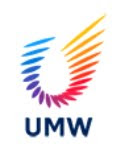Petrobras: Robust Recovery for Brazil
By Nancy DeMarco (Article from here)
Wednesday, December 23, 2009
JERSEY CITY, N.J. – Brazil is a huge country with a healthy appetite for lubricants, consuming more than 1.3 million cubic meters (about 1.18 million metric tons) in 2008. While the market may shrink about 3 percent in 2009, expect demand to grow 2 to 3 percent annually from 2011 to 2020, a Petrobras official told the ICIS conference here.
Flávio S. Gusmão Lima, an automotive lubricants specialist with Petrobras Distribuidora in Rio de Janeiro, gave an overview of the Brazilian lubricants market at the ICIS Pan-American Base Oils & Lubricants Conference on Dec. 3. He predicted that both demand and prices in Brazil’s lubricants market will return to 2008 levels in 2010, as a result of strong automotive demand in the country.
Base stock supply in Brazil amounted to 1.324 million cubic meters in 2008, said Gusmão. Petrobas’ three refineries supplied 696,000 m3 of API Group I base oils and 58,000 m3 of naphthenics, or 53 per cent of the total. Nineteen used oil rerefining plants provided 205,000 m3 of Group I stocks, or 15 percent of the total. Imports, mainly Groups II and III, reached 423,000 m3, the remaining 32 percent.
By law, Gusmão noted, lube oil marketers must collect a percentage of the used lubricants sold – 33 percent in 2009, rising to 36 percent in 2011. The used oil must be rerefined and cannot be used as fuel, “but rerefined oils are all Group I, used only in low-tier products,” he said.
The four largest additive producers have sites in Brazil, and dominate the automotive lubricants additives market. Infineum’s market share is 42 percent of automotive additives, followed by Lubrizol with 35 percent, Chevron Oronite with 15 percent, and Afton with 8 percent. On the industrial additive side, Gusmão said, in addition to the big four a number of smaller companies are developing and producing industrial lube additives; no market share data is available.
At 1.311 million m3, Brazil’s was the world’s fifth largest lubricant market in 2008, Gusmão continued, following the U.S., China, India, and Russia.
Eight major companies hold 88 percent of Brazil’s finished lubricant market, said Gusmão. These companies, with their market share from January through September 2009, are:
- Petrobras, 25.3 percent.
- Chevron’s Texaco, 14.5 percent.
- Ultra, 12.6 percent.
- Cosan and Shell, just over 10 percent each.
- Petronas, about 7.5 percent.
- Castrol and Ale, less than 5 percent each.
More than 120 smaller companies have the remaining 12 percent market share.
State-owned Petrobras was market leader in virtually every segment in the first nine months of this year, with 22 percent of passenger car motor oils, 27 percent of heavy duty oils, and nearly 30 percent of both transmission oils and industrial oils, Gusmão said. Only in Brazil’s highly concentrated grease market was it eclipsed by a competitor: Texaco held 25 percent of the grease market, while Petrobras claimed 22 percent, Ultra almost 15 percent, Shell and Petronas about 12 percent each, Cosan about 9 percent, and all others less than 5 percent combined.
Sixty-five percent of lubricants sold are automotive, Gusmão continued, and just 35 percent are industrial. “In Brazil,” he noted, “the government took actions this year, including a reduction of auto sales taxes,” to boost auto sales.
The passenger car and light commercial vehicle fleet consists of some 26.2 million units, said Gusmão, with an average age of 8 years. Flex-fuel engines – using any mixture of ethanol and gasoline – make up more than 92 percent of internal sales, while manual transmissions account for over 95 percent of internal sales. The minimum quality level for motor oils is API SF.
The semi-heavy and heavy duty vehicle fleet numbers 1.6 million units with an average age of 12 years. Motorcycles add another 13.1 million units to Brazil’s congested streets.
Gusmão highlighted changes in some of the key players in Brazil’s lubricants market since 2007. Fiat Lubricants was acquired by Petronas, and Exxon Brazil was acquired by ethanol fuel producer Cosan. The Texaco network was acquired by Ultra and Repsol was acquired by Ale, he continued, although neither included their lubes businesses in the sales. Finally, Ipiranga was acquired by Ultra in the south and southeast of Brazil, while Petrobras picked up Ipiranga’s businesses in the northeast and center of the country.
Looking at the future, Gusmão said that as Group II and III base oil use increases, imports will increase. He added that Petrobras has been studying possible Group II production for years, but the project is still just a study.
In the next decade, Gusmão concluded, Brazil’s lubricants market will see higher prices, lower viscosity grades and 2.5 percent annual growth.




0 comments:
Post a Comment